(Please read Part I and Part II prior to this article)
Theoretical Review
Identifying The Targets:
The first two parts of the series introduced new concepts to the Hybrid War theory and successfully tested them on the Syrian and Ukrainian cases. This proved that a certain methodology does in fact exist for explaining and analyzing Hybrid Wars, and excitingly, this rubric can proactively be applied in attempting to predict the places where this form of post-modern warfare could be directed next. To refer to Part I, one must first recall the Law of Hybrid Warfare:
“The grand objective behind every Hybrid War is to disrupt multipolar transnational connective projects through externally provoked identity conflicts (ethnic, religious, regional, political, etc.) within a targeted transit state.”
Considering this, the next step is to identify the major multipolar transnational connective projects ongoing or planned all across the world. Once this has been done, each transit state is assessed for the greatest number of vulnerable socio-political overlaps as according to the following six factors:
* ethnicity
* religion
* history
* administrative boundaries
* socio-economic disparity
* physical geography
From there, all that’s left to do is pinpoint the most socio-politically vulnerable transit states and set out to reverse engineer the conditions necessary for emphasizing key demographics’ anti-government “separateness” from the central authorities. Cultural anthropologists, historians, NGO activists, media and marketing experts, and “independent researchers”, among others, play a vanguard role in this social preconditioning process and can also be of integral use to US intelligence in explaining the most efficient methods to be employed in ideologically penetrating their targeted audiences’ psyches. Concurrent with this, varying degrees of structural preconditioning are also practiced in order to intensify the artificially constructed divide between the state and the strategic elements of its citizenry.
Civilizational And Civic Patriotism:
 Hybrid War is essentially the weaponization of chaos theory, which itself is disproportionately dependent on the initial conditions prior to the destabilization’s onset. As has been discussed, the socio-political vulnerabilities in each target state are important indicators in gauging the potential success of the oncoming regime change operation, but the six main factors are difficult to modify (let alone in a short timeframe) if they don’t play to the full advantage of the aggressor. Due to this, social and structural preconditioning take on an enhanced role, as ideas and economic trends are a lot easier to interfere with and change than ethnic composition and provincial boundaries, for example. Both of these constituent characteristics (affected respectively by social and structural preconditioning) can strongly impact on the target citizenry’s civilizational and/or civic patriotism, which is the strongest defense that a state has in repelling Hybrid War.
Hybrid War is essentially the weaponization of chaos theory, which itself is disproportionately dependent on the initial conditions prior to the destabilization’s onset. As has been discussed, the socio-political vulnerabilities in each target state are important indicators in gauging the potential success of the oncoming regime change operation, but the six main factors are difficult to modify (let alone in a short timeframe) if they don’t play to the full advantage of the aggressor. Due to this, social and structural preconditioning take on an enhanced role, as ideas and economic trends are a lot easier to interfere with and change than ethnic composition and provincial boundaries, for example. Both of these constituent characteristics (affected respectively by social and structural preconditioning) can strongly impact on the target citizenry’s civilizational and/or civic patriotism, which is the strongest defense that a state has in repelling Hybrid War.
It’s at this point where it’s worthy to once more recall the cases of Syria and Ukraine, as each of them proceeded along a completely divergent trajectory owing in large part to their differing level of civilizational/civic patriotism prior to the Hybrid War against them. This initial condition is undoubtedly the most critical in determining whether the destabilization will drag on for years or if it’ll be a swift and easy success.
The Syrian people have one of the world’s most vehement civilizational patriotisms, and this in turn amplified their country’s resiliency to resisting the multidimensional Hybrid War aggression being waged against them. As a result, the US and its allies have had to provide continual support to their proxy elements in order to unnaturally maintain the chaotic processes that they had expected to become self-perpetuating. In the event that such assistance is disrupted, it would thus directly translate into a visible weakening of the Hybrid War elements inside the country and consequently lead to their quick eradication.
Contrarily, the situation was the diametric opposite in Ukraine, where no civilizational patriotism was present (despite the rich legacy of Kievan Rus) and scarcely any civic patriotism existed. All that the US had to do was efficiently organize the proper assets and give them the signal to initiate their destabilization in unison. The chaotic processes then proceeded as theorized and began to take on a life of their own, requiring minimal guidance from that point onwards when compared to the strategic quagmire that the US crept into with Syria. The only significant intervention that the US engaged in was the false-flag sniper attack at the end of February, and it only did so because it sensed an irresistible opportunity to maximize the chaos and quickly topple the government.
To summarize this sub-section, the two glaringly different examples of Hybrid War in Syria and Ukraine prove that the initial condition of civilizational and/or civic patriotism is the deciding factor in influencing the course of the asymmetrical conflict, and accordingly, should demonstrate to democratic security specialists the existential importance in proactively supporting such measures within their own targeted states.
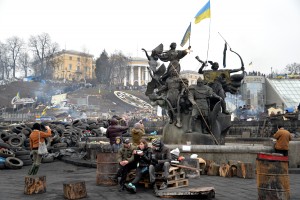 Unleashing The Wrath:
Unleashing The Wrath:
Finally, it’s relevant to touch upon the beginning stages of Hybrid War and briefly explain the tactical limitations of the theory as they apply to two specific categories of states. Concerning the initial stage similarities shared by the vast majority of states, a preconceived moment (typically something symbolic such as an historically important commemoration, a parliamentary/presidential vote, or a provoked instance of state-on-“protester” violence) or a fortuitous turn of events (e.g. Yanukovich’s last-minute decision to postpone the EU Association Agreement) is used as a signal to merge the separate cells comprising the regime change social infrastructure into a critical anti-government mass that inaugurates the Color Revolution movement and heralds the first step of Hybrid War. Should the ‘soft coup’ (often interspersed with lethal urban terrorism) fail, then the ‘hard coup’ push of Unconventional War is eventually initiated against the beleaguered government and its patriotic citizenry, thereby fulfilling the Hybrid War template.
Not all Unconventional Wars begin with Color Revolutions and not all Color Revolutions end in Unconventional Wars, but the US’ strategic aim going forward is to have the two forms of regime change seamlessly merge together into an escalatory ladder of intensified anti-government pressure whenever possible. Some societies with fully developed civil societies (relative to the globally recognized Western ‘standard’) and without many of the prerequisite socio-political vulnerabilities such as Denmark might never experience the Unconventional Warfare aspect of Hybrid War and would only likely fall victim to its Color Revolution side. However, a re-engineering of their demographics (e.g. the “refugee” crisis) could predictably change that and make them much more susceptible to a full Hybrid War.
Continuing along, states that don’t have as robust of a civil society (or none at all in the Western traditional sense), yet overly satisfy the socio-political credentials for Unconventional Warfare like the Central African Republic does, might just outright skip the Color Revolution stage and jump right into the identity warfare part of Hybrid War. As with the first example, this could also change via a demographic re-engineering of society, albeit in a different manner whereby rapid (most likely Chinese-supported) development leads to the birth of an emergent middle class that could potentially fill the ranks of Color Revolution insurgents.
In rare situations, there’s also the possibility of a “Reverse Hybrid War”, whereby an Unconventional War precedes a Color Revolution. To an extent, it can be argued that Myanmar’s drawn-out civil war created fertile conditions for the 1989 Color Revolution and subsequent rise of Aung San Suu Kyi. While it took over two decades for her to finally win full power, she eventually did nonetheless, and it’s clear that the Unconventional War environment preconditioned the masses into accepting this with time. Likewise, something similar is currently playing out in West Africa with Boko Haram. Each of the four states in the Lake Chad region are coming under sharp pressure from the terrorist group, and the violence that has resulted is creating a situation where even a disorganized Color Revolution increases the chance of its ultimate success precisely because of the target government’s preoccupation with Boko Haram.
This is especially the case with Chad, whose capital of Ndjamena is in extremely close proximity to the battleground and has already fallen victim to a few suicide bombings. A nascent Color Revolution would be the ultimate force multiplier in skyrocketing the chances that the government would be overthrown, either by Boko Haram, the urban insurgents, or a tacit and coordinated effort between the two. From a standardized theoretical standpoint, the existing Unconventional Warfighters team up with the newly active Color Revolutionaries in order to decisively shift the balance against the state and succeed in the shared regime change objective. The only alternative to this scenario would be for the military to crush the crush the “protesters” with extreme prejudice the moment they rise up before moving on to swiftly annihilate any terrorists that try to exploit the coming fray, with the same pattern holding true for Chad as it does for any other state that finds itself at risk of “Reverse Hybrid War”.
Practical Application
Taking everything that’s been reviewed so far and proven by the Syrian and Ukrainian test cases, it’s now time to practically apply the lessons of Hybrid War in predicting where it could strike next. The most impactful multipolar transnational connective projects are spearheaded by Russia and China, and the two most significant of them are the Eurasian Union and the One Belt One Road (“New Silk Road”). Their shared area of intersection in Central Asia means that that any large-scale destabilization in this region could accomplish the ‘two-for-one’ goal of offsetting both Great Powers’ ambitions in one geopolitical masterstroke, which is why there’s such a high risk of Hybrid War breaking out there sometime in the near future. Elsewhere, however, there’s no direct integrational overlap of the Russian-Chinese Strategic Partnership except in the Balkans, but even there, the confluence of interests is less tightly connected and developed than it is in Central Asia. It should go without saying, however, that this makes the theater the second-most likely region to fall victim to Hybrid Wars in the future out of American ‘necessity’ to preempt the conclusion of the two megaprojects of Balkan (“Turkish”) Stream and the Balkan Silk Road that could decisively tilt Europe’s strategic balance towards the multipolar world.
The other regions at risk of Hybrid War are targeted specifically because of their cooperation with China’s New Silk Road, and they include” the Greater Heartland states of Iran, Afghanistan, and Pakistan; the western part of ASEAN; the Indian Ocean archipelago state of Maldives; a large swath of trans-equatorial Africa that bridges the oceanic divide; and Brazil-Peru and Nicaragua in Latin America. The below is a map that clearly illustrates the aforementioned geographic zones most likely to be threatened by Hybrid War in the future:

Out of these identified regions (and with the exception of the ‘stand-alone’ state of the Maldives), there are core countries whose identity-based destabilization is most likely to occur due to certain context-specific reasons. Most realistically in terms of their relative probability, they are as follows: Uzbekistan in the Greater Heartland; the Republic of Macedonia in the Balkans; Myanmar in ASEAN; Djibouti-Ethiopia in Africa; and Nicaragua in Latin America. Simplifying the earlier map, here’s what it looks like with only the geopolitical triggers highlighted:
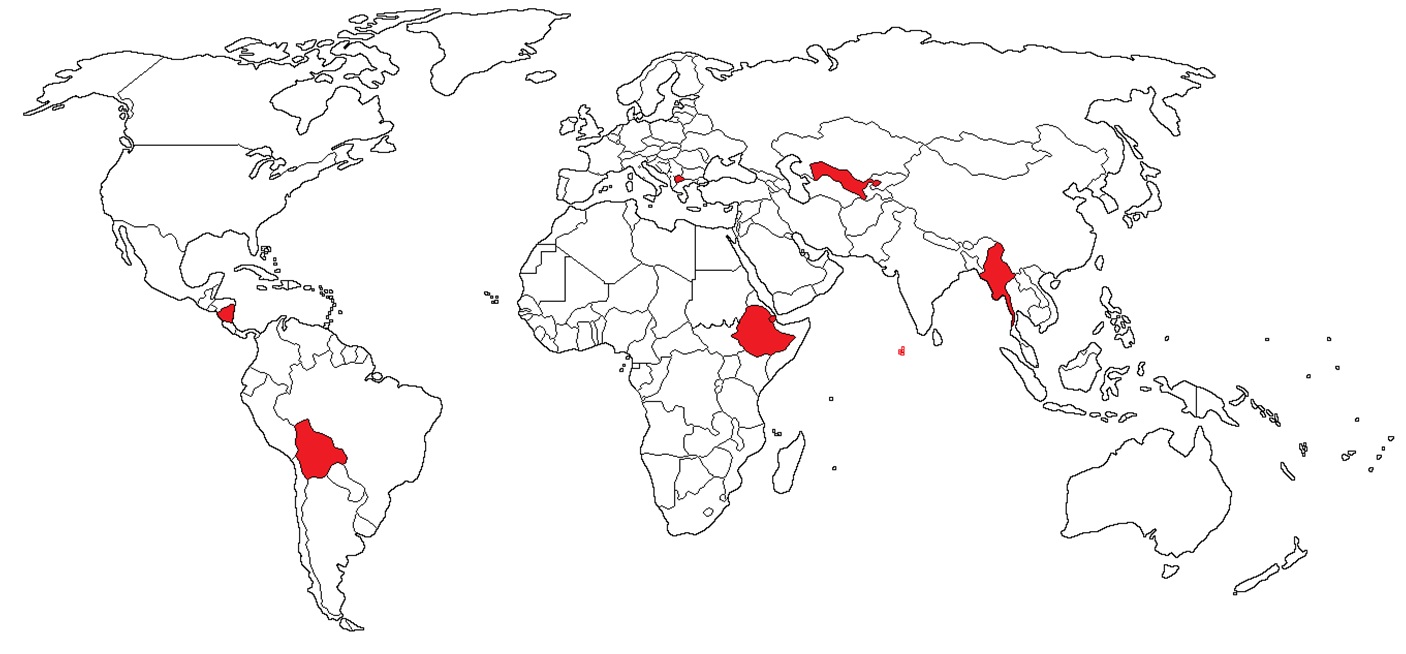
The above map does come with a caveat, however, and it’s that the core triggers in the Greater Heartland, ASEAN, Africa, and Latin America could possibly be usurped by less likely but regionally more impactful Hybrid Wars in in the countries of Turkmenistan, Thailand, Kenya-Tanzania, and Brazil. Destabilizations in these countries might even be more effective in disrupting the multipolar transnational connective projects that they’re a part of than if they happened in their aforementioned regional counterparts. Here’s a modified map that reflects the caveats:
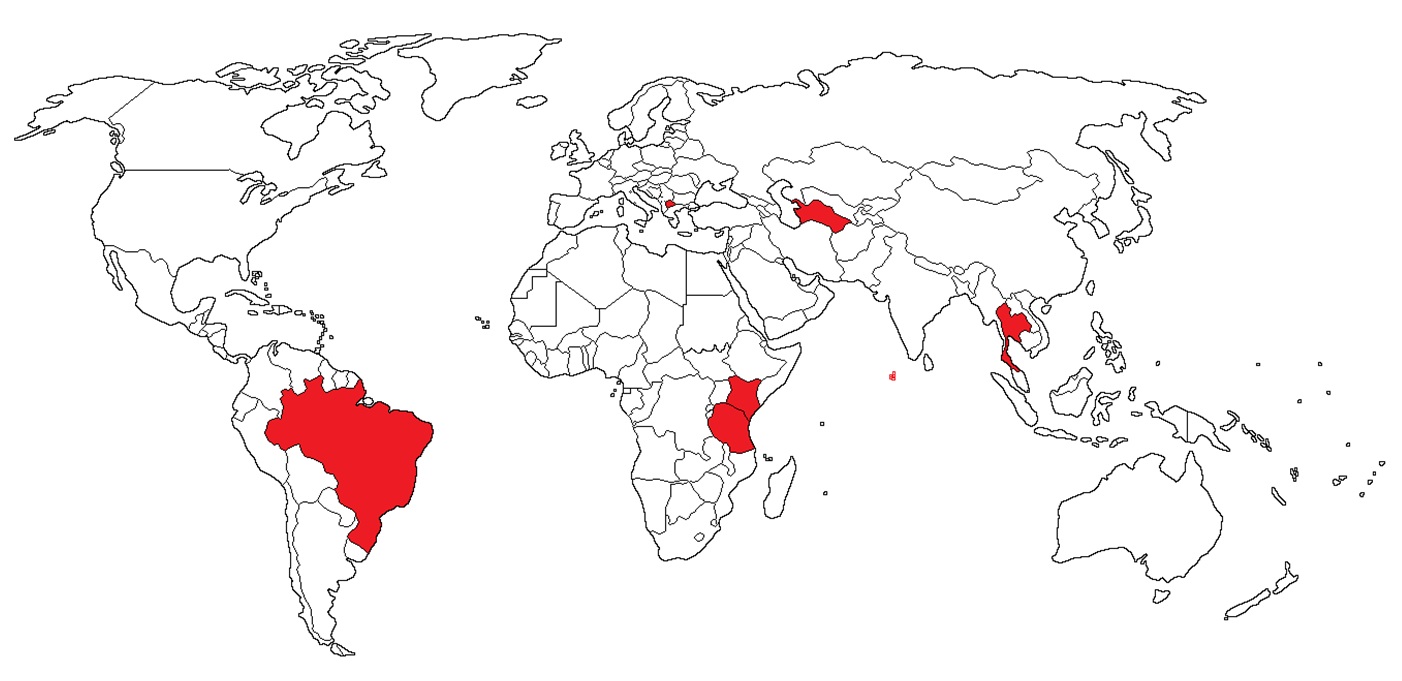
Having revealed the core targets of Hybrid War, the forthcoming sections of the research will focus on each designated region, with an emphasis on the highlighted triggers that are expected to either set off a wider conflagration or irreversibly sabotage the transnational integrational projects that they’re a part of. The only exception to the outlined format is the Maldives, since the author has already written an exhaustive three-part analysis about its Hybrid War risk and the broader geopolitical implications of its destabilization. On that account, the next parts of the research will proceed along the order of Central Asia, the Balkans, ASEAN, Africa, and Latin America.
Each section will begin by describing the region’s geo-economic importance, or in other words, how it adheres to the Law of Hybrid War. Afterwards, a brief overview will be given whereby some of the most relevant socio-political vulnerabilities for each state will be touched upon and incorporated into broad Hybrid War scenarios. Finally, the last part specifically focuses on the core target in each region by explaining how a Hybrid War there would quickly shatter the multipolar transnational connective project that they’re a part of, and when appropriate, it discusses the comparative differences in probability and impact between the core and caveat states.
Andrew Korybko is the post-graduate of the MGIMO University and author of the monograph “Hybrid Wars: The Indirect Adaptive Approach To Regime Change” (2015). This text will be included into his forthcoming book on the theory of Hybrid Warfare.
PREVIOUS CHAPTERS:
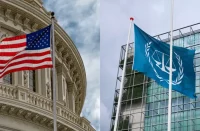







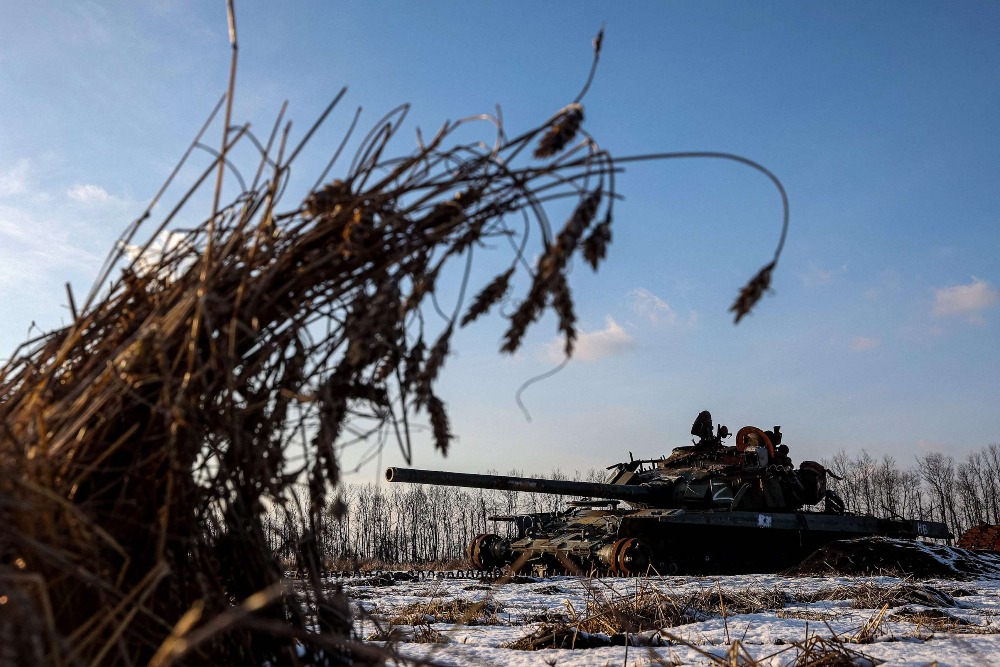





Pingback: Hybrid Wars 3. Predicting The Next Hybrid Wars | Protestation
Thanks for this very important lessons. Keep doing it. I am waiting for the next.
It is called Spring.
Those who chose this word of great hope for the destruction of others are diabolical.
South Africa is also a target. The BRICS are all targeted. It seems that India has already folded. Modi will be gone if he deviates. Wiki: “He is the second most followed politician on social media after U.S. President Barack Obama” says it all. Poor India may have lost it’s mind but then, despite Gandhi, it lost it long ago under the influence of the British.
Zimbabwe has long been targeted. Yugoslavia has gone as would have happened to Greece if it had not folded. Venezuela and Argentina are targeted.
Can anyone be surprised by any of this?
Those who follow the Empire of chaos get what they deserve. Unfortunately they inflict injustice on others as in the case of another target, Syria.
Nevertheless, those who cave in the face of this misuse of Spring get what they deserve.
.
Pingback: Guerres hybrides : 3. Prédire les prochaines guerres hybrides – ANTI-MONDIALISATION
The current developments in U.S. global geostrategy echo earlier developments. When the U.S. ruling class is feeling confident (whether it is actually justified or not) they move with overt military force against perceived enemies, rivals, or desired resource regions. When such an overt operation fails to achieve the desired result more circumspect methods are then used to pursue their objectives. The most glaring previous example of this is the Vietnam War, with the defeat of the conventional conscript manned military, the fall back methodolgy then occurred in the different Post-Vietnam campaigns. El Salvador, Guatemala, Nicaragua, Chile, Angola, Congo, and Indonesia, among others are places where the covert special forces, death squads, and Coups D’etat were different variants of Post-Vietnam operations.
There are some basic differences in the position of the U.S. and its rulers this time around as compared to the earlier epochs. Clearly, the U.S. is no longer the dominant industrial collossus it was previously; 100 years ago the U.S. Capitalists and its associated state apparatus built the infrastructural projects necessary to extract resources and to keep commerce moving; now that is largely the province of one of the major rival states, China. The most famous American built infrastructure project of that era, the Panama Canal, is right now being rebuilt to a modern standard by Chinese engineering and construction companies, paid for by bonds floated by the Panamanian Government. And another Chinese billionaire is starting work on building a second canal through Nicaragua. Like the fading hegemonic power of that past century, the U.K., American Capitalists now work on achieving their goals using swindles, covert violence, and governmental overthrows. The best such machinations can achieve is to frustrate some of the rival bloc’s operations to consolidate and tie together Eurasia and Africa. The primary goal is to create horrific suffering and failed states wherever these operations are underway.
Pingback: Hybrid Wars 4. In the Greater Heartland (I) | Oriental Review
Pingback: A Caspian Canal? Not So Fast… | Oriental Review
Pingback: Hybrid Wars 4. In the Greater Heartland (III) | Oriental Review
Pingback: Hybrid Wars 3. Predicting Next Hybrid Wars- by Andrew Korybko - GPOLIT
Pingback: Hybrid Wars 5. Breaking the Balkans (I) | Oriental Review
Pingback: Hybrid Wars: Breaking the Balkans. Intense New Cold War Competition | Counter Information
Pingback: Hybrid Wars 6. Trick To Containing China (IV) | Oriental Review
Pingback: Hybrid Wars 7. How The US Could Manufacture A Mess In Myanmar (I) | Oriental Review
Pingback: Hybrid Wars 8. Strategies Against Africa – Introduction | Oriental Review
Pingback: Guerres hybrides : Stratégies contre l’Afrique | Cayo Hueso
Pingback: Guerre hybride : 8. Stratégies contre l’Afrique Introduction | Réseau International
Pingback: Hybrid Wars 8. Strategies Against Africa – Introduction – Wargeyska Saxafi
Pingback: Hybrid Wars 8. In The Horn Of Africa (IIC) | Oriental Review
Pingback: Hybrid Wars 8. There’s more than meets the eye in Mozambique | Oriental Review
Pingback: Hybrid Wars 8. Is Southern Africa About To Be Shaken Up? | Oriental Review
Pingback: Hybrid War Can Wreak Havoc Across West Africa (I) | Oriental Review
Pingback: Hybrid War Can Wreak Havoc Across West Africa | Counter Information
Pingback: Hybrid Wars 8. In The Horn of Africa (Somalia and its neighbours) |
Pingback: A Caspian Canal? Not So Fast… | حمید رابعی
Pingback: The Geostrategic Consequences Of The Hybrid War On Bolivia – Orinoco Tribune
Pingback: جنگهای ترکیبی
Pingback: جنگهای ترکیبی: 3. پیشبینی جنگهای ترکیبی درآینده: آندریوف کوریبکو/ترجمۀ حمید محوی | اشتراک eshtrak
Pingback: Hybrid Wars 8. Strategies Against Africa – Introduction | Saxafi